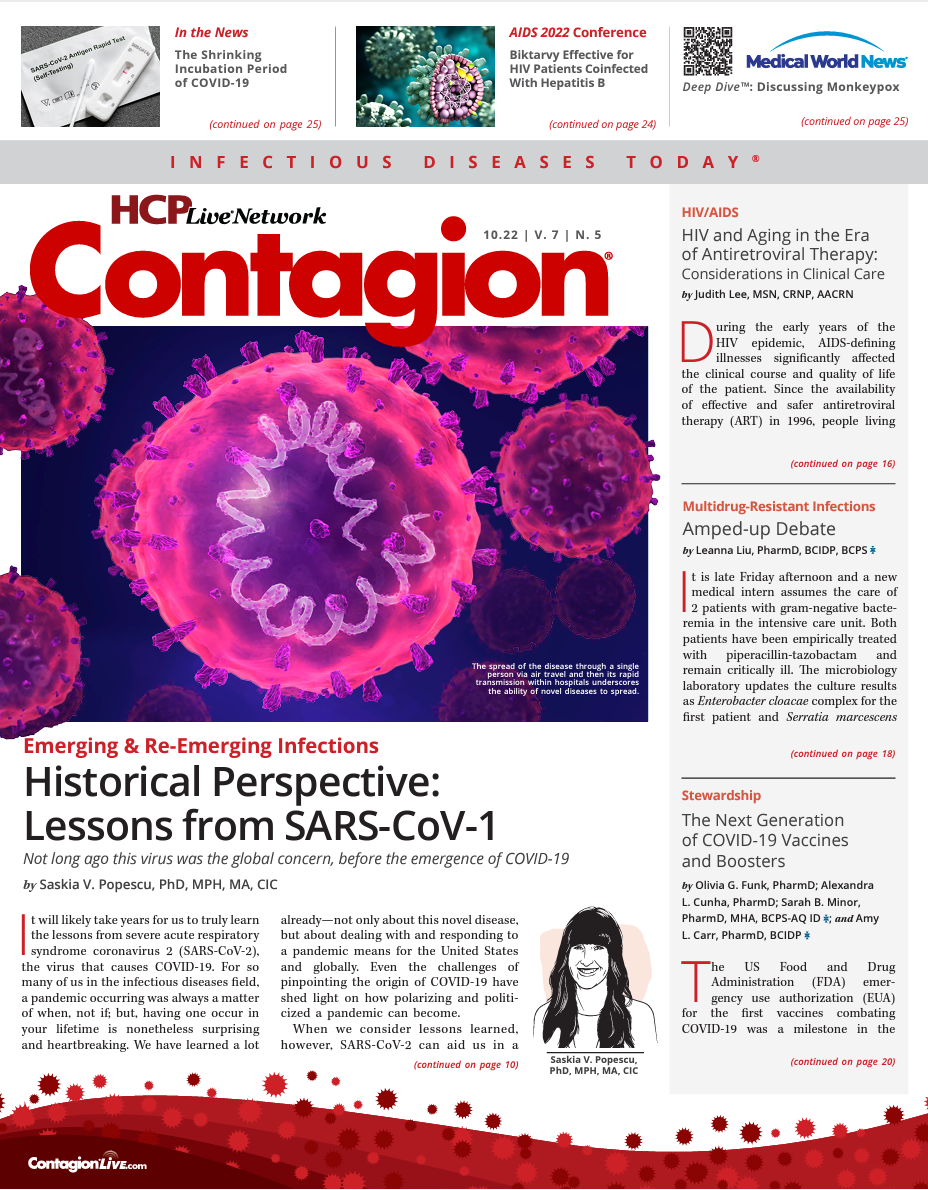Who Doesn’t Love a Prequel? SARS Before CoV-2
Our cover story for the October 2022 print edition of Contagion details the original coronavirus.
During these past few years, any mention of severe acute respiratory syndrome (SARS) has connoted SARS-CoV-2. However, before the present coronavirus pandemic, there were notable earlier iterations of SARS.
In our cover story this issue, Saskia V. Popescu, PhD, MPH, MA, CIC, paints a historical picture of SARS-CoV-1. As she details, the first SARS infection occurred almost 20 years ago.
No October would be complete without a horror story, and that SARS outbreak fits many tropes of the genre. Just 1 infected woman, returning home to Toronto after a trip to Hong Kong, transmitted the fledgling respi-ratory infection to 257 people in several Greater Toronto area hospitals. Unfortunately, Popescu explains, nearly 3 in 4 SARS cases originated in the hospital setting.
Here’s where the déjà vu sets in: SARS spread so rapidly due to a lack of isolation, protection, and testing protocol. Additionally, initial cases in China were woefully underreported, and the World Health Organization (WHO) was notified too late.
SARS is a particularly nefarious virus, as it can live on surfaces as well as in respiratory drop-lets. This early aughts coronavirus had a mortality rate of over 9%, whereas COVID-19’s mortality rate is around 1.1% in the United States. Despite this high fatality risk, SARS-CoV-1 was quickly contained by June 2003, only 4 months after WHO was notified of the virus.
We can count ourselves lucky that the current coronavirus, though it continues to wreak havoc, is significantly less fatal. But how did this come to be? SARS-CoV-1 caused a reported 8100 infec-tions and 770 deaths globally, whereas SARS-CoV-2 now accounts for 609 million infections and 6.52 million deaths.
What made COVID-19 simultaneously more infectious and less deadly than its predecessor? We were asking similar questions earlier this year when the Omicron variant outstripped Delta with higher transmissibility but lower morbidity and mortality.
Virus mutations are confounding, but one certainty is that the longer a pathogen is allowed to spread uninhibited, the more severe and numerous these mutations are likely to be.
Fortunately, we are in a much better, more informed place than we were 20 or even 2 years ago. We have done and continue to do extensive research that has yielded highly effective vaccines and therapies. Let’s continue to stop the spread, slow mutations, and ensure there’s no SARS-CoV-3.

